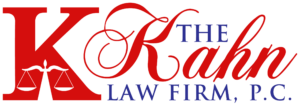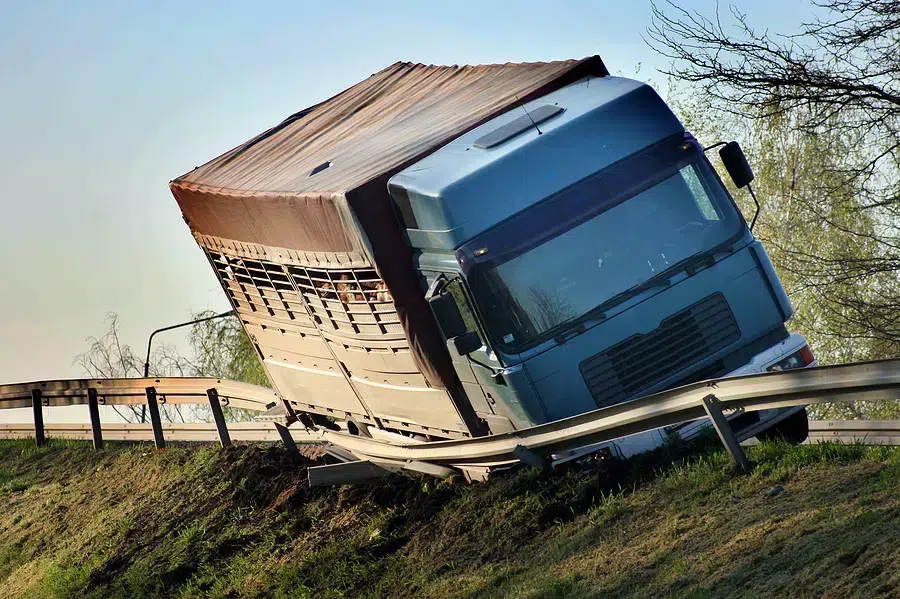What Rules Prevent the Overloading of Trucks?
According to the rules set forth by the Federal Motor Carrier Safety Administration, a truck’s cargo should be loaded and secured with the following safety measures in mind:
- Securement systems used on commercial trucks should be able to withstand some acceleration and deceleration. The system in place should hold when subjected to 0.8 g deceleration moving forward and 0.5 g acceleration moving backward.
- If possible, all tie downs used for trailers with rub rails must be positioned inboard the rub rails. Tiedowns must also include edge protection when they are likely to sustain abrasions from contact with cargo. Two tie downs must be used if a piece of cargo measures five feet or less in length but weighs over 1,100 pounds. Two tie downs are also required when cargo is longer than five feet but less than ten feet.
- Cargo that may roll inside a trailer should be secured with chocks, wedges, and other equipment that prevents rolling. The items that are used in order to avoid rolling must not be loose while the truck is in motion.
Additionally, a truck with a single axle is limited to 20,000 pounds of cargo, and a truck with a tandem axle may only carry 34,000 pounds of cargo. The truck’s gross weight may not exceed 80,000 pounds.
What Makes an Overloaded Truck Dangerous?
Accidents related to an overloaded truck include but are not limited to:
- Difficulty maneuvering: A heavy cargo load may make it difficult for a driver to safely maneuver the vehicle around corners or turns.
- Tire blowouts: Excessive weight may result in burst tires that can cause wrecks.
- Braking difficulties: A heavy load may not give the driver enough time to avoid a collision.
- Mechanical failure: Overloaded trucks can place excessive stress on key parts of a truck that can cause failure.
What Types of Accidents Can Occur From an Overloaded Truck?
An overloaded truck can cause an accident in many ways, such as:
- Rollovers
- Losing cargo that collides with other motorists
- Road collapse
- Rear-end crashes and brake-failure accidents
- Tire blowout crashes
What are Signs of an Overloaded Truck?
When a commercial vehicle is carrying cargo in excess of its handling capabilities, there are signs, such as:
- Sagging
- Overflowing or spilling cargo
- Bulging tires
- Poor steering
Who is Responsible for an Accident Resulting From an Overloaded Truck?
Many parties may be responsible for accidents that occur because of an overloaded truck. Determining the responsible party or parties is an important and difficult part of these claims. Depending on the circumstances, the responsible parties may include:
- Truck driver: A driver may be held liable if he or she fails to ensure that their load complies with federal and state laws.
- Trucking companies: A trucking company can be held liable if it fails to adequately train a driver to secure and weigh a load effectively. Additionally, a company may be held liable under the doctrine of respondeat superior, which holds an employer liable for an employee’s wrongdoings within the scope of employment.
- Truck manufacturers: A defective product can be the cause of an accident.
- Truck loaders: The people who load a truck may work for a company other than the one that owns the truck or cargo. This may cause multiple pirates to be at fault for an accident.
How is Liability Determined?
As with any injury case, liability is determined through the legal theory of negligence. Negligence or recklessness is established by proving four specific elements that show a party is responsible for an accident and the resulting injuries. The four elements of negligence are:
- Duty of care: This element is established by proving that the responsible party owed the injured party a reasonable expectation of care.
- Breach of duty: The responsible party failed to uphold their duty of care by acting in a specific manner.
- Causation: This breach of duty is directly responsible for the accident and the injuries resulting from the accident.
- Damages: Damages represent the monetary amount of compensation sought for injuries resulting from the accident.
Negligence Per Se
If a truck driver has violated a state or federal law, the theory of negligence per se may apply. Negligence per se removes the need to establish the first two elements of negligence because the violation of the law is accepted as a breach of duty of care. This leaves the injured party responsible for only proving that the driver violated the law and that this violation caused the accident.
Modified Comparative Fault
The State of Texas uses a system of modified comparative fault that allows multiple parties, including the injured party, to hold blame for an accident. If a victim is found to be partially responsible for an accident, then the awarded damages are reduced based on the injured party’s percentage of fault. If an injured party is found to be more than 50% at fault for an accident, then he or she cannot recover any damages.
What Possible Claims May Be Filed for an Overloaded Truck Accident?
Several types of claims may be filed, depending on the specific circumstances of each accident. Possible claims include:
- Negligence claims
- Product liability claims
- Wrongful death claims
- Vicarious liability
Do I Need an Attorney?
If you have been injured by a commercial vehicle, you need aggressive and knowledgeable legal representation you can count on. Between a driver or company insurance and lawyers, you do not want to take this fight on alone. Call The Kahn Law Firm, P.C., today at 713-999-6549 or fill out a contact form for a free consultation.





